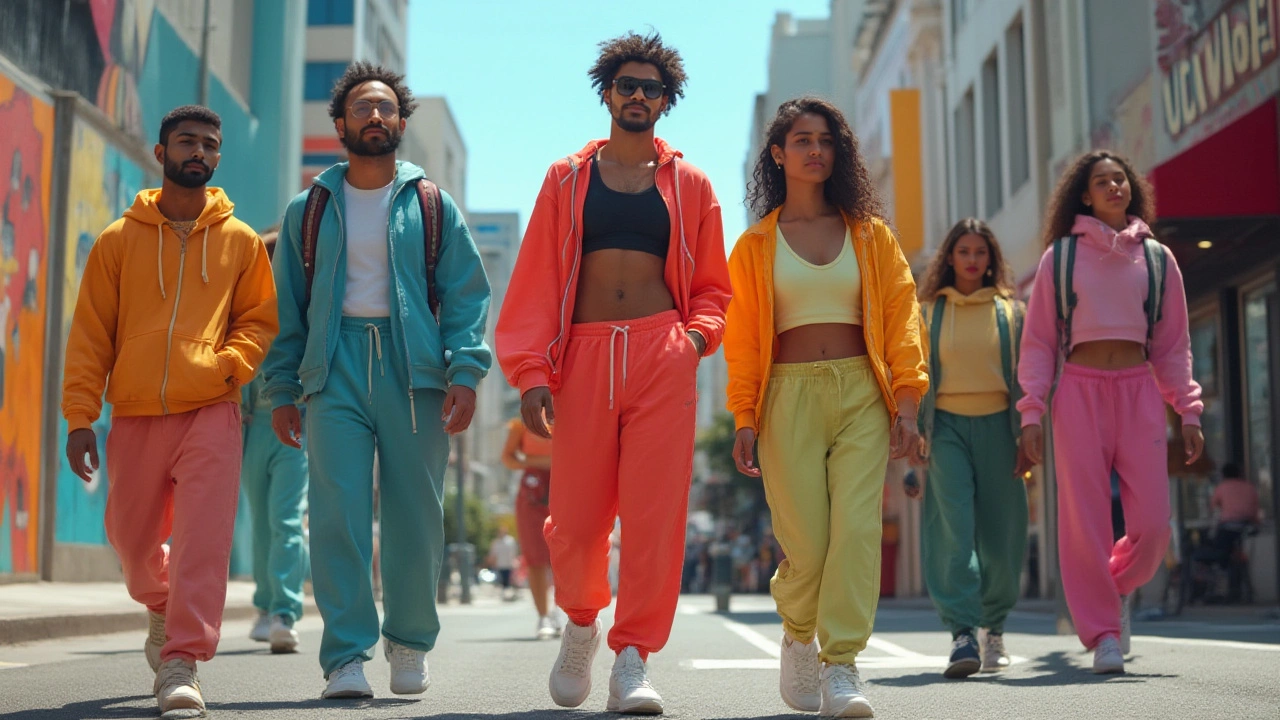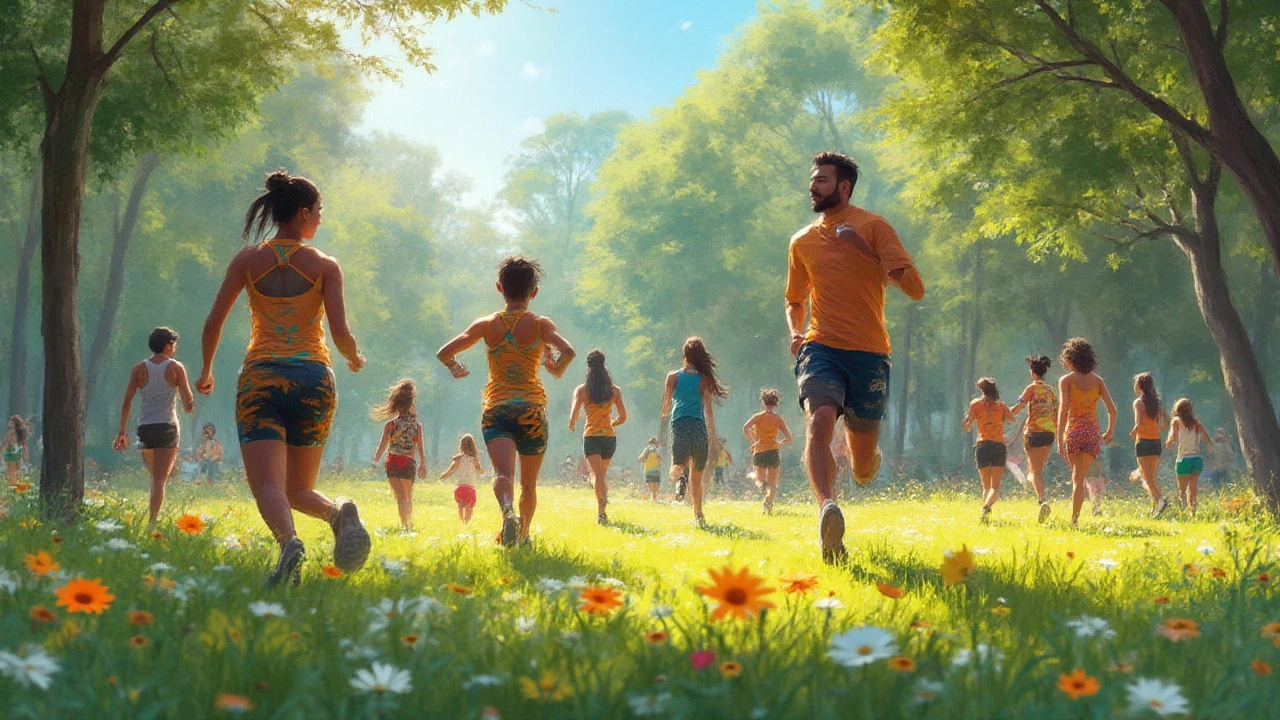Why Sportswear Is Everywhere: Comfort, Style, and Culture in 2025

Look around on any street, in any café, even at formal-ish brunches, and you’ll see more joggers, stretchy leggings, oversized sweatshirts, and sneakers than button-ups or stiff jeans. Sportswear isn’t just a lightning-fast trend anymore—it’s become this baseline for everyday style, right up there with denim or T-shirts. In Melbourne, I can barely walk to the corner shop without passing at least six people in sporty outfits, and funnily enough, most are not heading to the gym. Even my daughter Zara’s school pickup line is a parade of athleisure—whether you’re a mum in a hurry or a student in after-school soccer, no one's immune. So, what’s behind this massive grip sportswear has on modern wardrobes?
The Rise of Athleisure: From Track to Street
Sportswear’s leap from the actual playing field to high fashion racks didn’t happen overnight. Back in the day, you either wore leggings at the gym or risked side-eye. But somewhere around the early 2010s, big designers began collaborating with athletic brands—think Adidas with Stella McCartney, or Nike shoes topping Vogue’s must-haves—and suddenly, joggers with a blazer looked less lazy and more ‘I get things done’. Social media supercharged this shift. Instagram feeds became packed with outfit snaps: people mixing yoga pants with expensive handbags, wearing trainers to brunch, even styling sports bras as crop tops under smart jackets. By 2022, 'athleisure' (a word that didn’t even exist two decades ago) was one of Google’s top searched fashion terms. Now, in 2025, it’s normal for CEOs to pitch in stretchy knit slacks and a pair of trendy runners. A survey from Statista last year showed that in Australia, over 65% of consumers bought new sportswear not for sport, but for everyday wear.
If you’re curious about why this trend took off in such a big way, there are two main ingredients—one, our lives got much less rigid about what’s ‘acceptable’ to wear, thanks to changes in work culture (hello endless Zoom meetings from the couch); two, global health and wellness movements made fitness the new cool, and sportswear became a badge of that. I remember when Nathan, who has always been into sneakers, said the only thing missing was a pair that felt like clouds at work, and boom: now they’re everywhere, light as feathers, blending into any outfit. It’s this new normal where performance fabrics and minimalist cuts aren’t just for sweating—they’re for everything, everywhere.
The Science of Comfort and Functionality
If you’ve ever worn old school stiff trousers all day, you know why sportswear feels like a dream. Designers now use cutting-edge materials—think moisture-wicking blends, four-way stretch, and seamless knits. Modern sportswear tech is actually science in action. In 2023, a report by the Australian Fashion Council found that over 80% of sportswear shoppers named physical comfort as their top reason for buying it. Imagine the relief: no saggy knees, no pinching waistbands, fabrics that breathe on a summer tram ride here in Melbourne. No parent wants to chase after their kid in skinny jeans when there are stretchy options that move with you.
And for folks like Zara, who has PE twice a week and dance on Fridays, she can layer a sporty jacket over a dress and handle anything the day throws at her. But it’s not just about softness—these new fabrics last longer, resist smells, and dry in minutes if you’re caught out in Melbourne’s famous four-seasons-in-a-day weather. Even sports bras have gotten friendlier: companies like Lululemon and Nimble (locally born in Australia) spend years perfecting fits that actually cater for everyone, not just the ‘sports model’ figure.
Want some hard facts? Check this out:
| Feature | Traditional Clothes | Modern Sportswear |
|---|---|---|
| Stretchiness | Limited | High (Up to 150% stretch) |
| Dry Time | 2-4 hours | Less than 30 mins |
| Odor Resistance | Low | Antimicrobial tech |
| Weight | Heavy | Featherlight (less than 200g/piece) |
| Wash Cycles to Wear Out | 50-75 | 150-200+ |
The takeaway? Brands now treat design labs a bit like Apple treats their tech workshops: there’s always something new and clever behind the seams. Sportswear solves real, everyday problems and once you try it, you really don’t want to go back.

Sportswear, Identity, and Social Signals
Wearing sportswear isn’t just about comfort; it’s become a shortcut to sending signals—about who you are and what you care about. A sleek, all-black tracksuit can say you’re both active and stylish, even if your idea of activity is a brisk walk to the market. Designers play with bolder colors, wild patterns, and logo-heavy styles that let you show off a favorite team or cause. Some studies even link wearing activewear to feeling more motivated—a kind of ‘look good, feel good, do good’ feedback loop.
There’s also something kind of cool about the way sportswear bridges gaps. In Melbourne, you’ll see students, office workers, retirees all in similar sneakers or joggers—even my mum swapped her linen pants for an elastic waistband recently. Crossing generations is pretty rare in the fashion world, but here’s sportswear making it look easy. It’s even a conversation starter. I once swapped reviews on running shorts with a woman twice my age while waiting for flat whites. We both agreed: pockets are life. That kind of community-building is underrated, but it’s real. Plus, inclusivity is now baked in—most modern sportswear brands make size ranges that fit nearly every body type, and unisex or gender-neutral cuts are almost standard.
The message? Sportswear says, “I value feeling good, I live actively (or at least want to), and I care about practical style.”
“The rise of athleisure is less about dressing for the gym, and more about dressing for the life you want—comfortable, mobile, and modern,”said Lorna Jane Clarkson, founder of one of Australia’s biggest activewear brands. Maybe you recognize yourself in that, too.
Technology Powering the Sportswear Boom
Tech isn’t just for your gadgets—it quietly powers almost every bit of your favorite hoodie or high-waisted leggings. Companies are now weaving recycled plastics, bamboo fibers, even minerals into yarns for clothes that actually cool you down or protect you from sunburns (SPF 50 woven right in!). Some sports tops track posture, while socks can track steps or warn if you’re running incorrectly—crazy but true. In 2024, the wearable tech industry for sports fashion hit nearly $7 billion globally, and it’s still growing.
Even washing these clothes got easier: anti-bacterial treatments mean fewer odors, which means less laundry. My husband Nathan, who works long hospital shifts, swears by T-shirts treated with silver ions—they literally don’t get smelly even after a two-day stretch (not that I recommend testing that on purpose). Sports bras and compression leggings once used for medical support are now everyday musts for people who sit at computers all day. Here in Australia, rapid-dry fabrics are a godsend if you’re caught in a rain shower (again, Melbourne!) or need to rinse something during a lunch break.
But tech isn’t just gimmicks. Makers use 3D weaving for seamless designs—no scratchy threads, no chafing. Some brands are pioneering biodegradable fabrics, which decompose in months, not years, so your beloved yoga pants won’t clog up landfills. And now, product launches update every season with new features, like integrated smartwatch pockets or reflective strips for night safety. This kind of innovation keeps people interested: there’s always the promise of “next-gen” comfort or style to nerd out over.

Tips for Blending Sportswear into Everyday Life
If you feel weird about wearing full-on gym gear on non-workout days, you’re not alone—but there are easy ways to style sportswear that feel sharp, not sloppy. Start with neutral base pieces: black leggings, clean white trainers, or a simple racerback tank. Add a slightly oversized jacket or even a tailored coat for balance. Accessories make all the difference—a sleek backpack, bucket hat, or chunky hoop earrings can make casual sports staples feel intentional, not thrown-together.
- Swap stiff pants for stretchy trousers with a crisp white tee and a utility jacket on top for errands or coffee runs.
- Layer: A fitted tank under a shirt plus a zip-up hoodie gives a city-ready vibe (and warmth on chilly Melbourne mornings).
- If you want your look to skew smart, throw on some chunky-soled trainers with ankle-length jeans and a subtle sporty windbreaker.
- Choose sports bras or crop tops in soft pastels with open button-ups for laid-back brunches or gallery trips.
- For kids, let them wear sporty skorts or performance polos—they’ll look cool, stay comfortable, and be ready for the playground or party.
Care matters, too, so always wash your sportswear in cold water and avoid fabric softeners (they break down the magic stretchy fibers). If clothes say ‘line-dry only’, take it seriously—they’ll last way longer and save you money. And every wardrobe benefits from a couple of fun, bold pieces: a bright neon singlet or some futuristic trainers can totally change your mood.
Ultimately, if you ever doubted why sportswear is so popular, try living a week in it. Flexible, practical, and a quiet nudge to move more—it just fits the life we all live now.
- Jul, 23 2025
- Violet Greenfield
- 0
- Permalink
Written by Violet Greenfield
View all posts by: Violet Greenfield